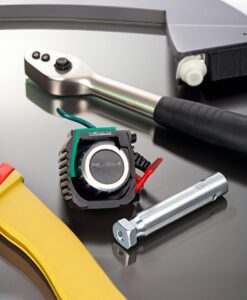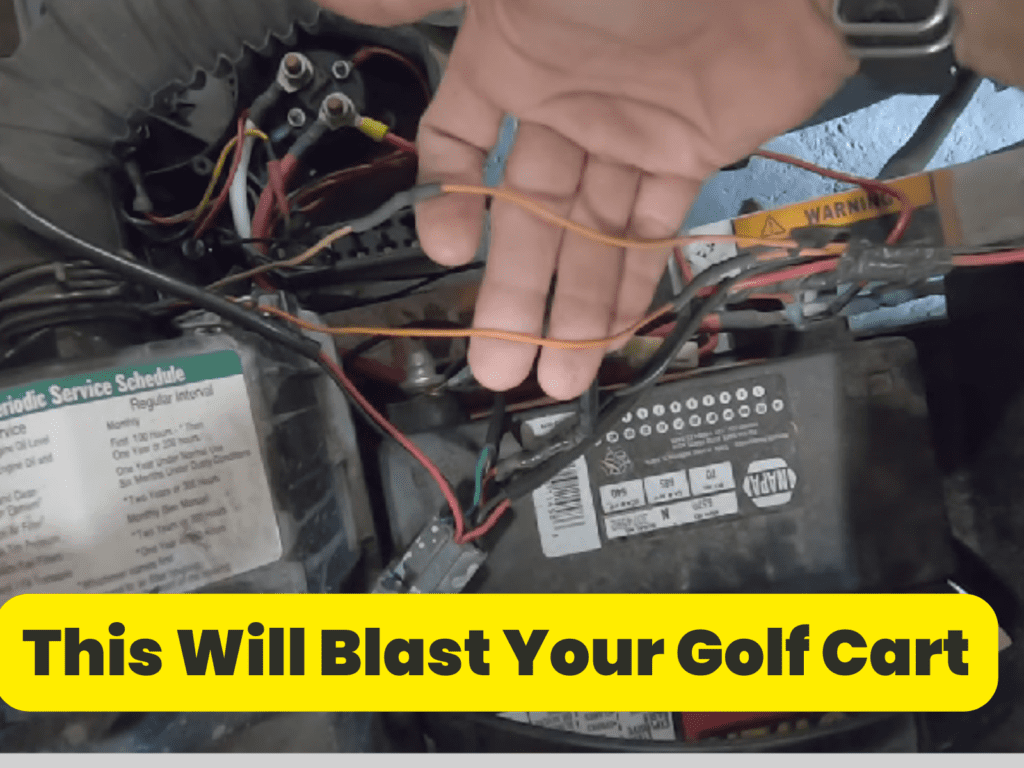Are you tired of your electric golf cart’s speed being limited? Do you want to remove the speed limiter to boost your cart’s performance? If so, you’re in the right place. In this comprehensive guide, we will show you exactly how to remove the speed limiter on your electric golf cart. We’ll also explain the importance of speed limiters, the legal considerations, and alternative ways to increase the speed and performance of your golf cart. So, let’s dive in and get started on removing the speed limiter on your electric golf cart.
Introduction
Are you an electric golf cart owner looking for a way to increase your cart’s top speed? The pre-installed speed limiter can be a significant obstacle for those who want to use their golf cart for personal transportation. Luckily, removing the speed limiter is possible and can provide the performance boost you’re looking for.
In this article, we’ll provide a step-by-step guide on how to remove the speed limiter on your electric golf cart. We’ll also cover the legal implications and potential risks of modifying your cart. Additionally, we’ll provide alternative ways to improve your golf cart’s performance beyond just removing the speed limiter.

Understanding the Importance of Speed Limiters on Electric Golf Carts
Electric golf carts are designed to be used on golf courses, where speed limiters are essential for safety reasons. The speed limiters are designed to regulate the top speed of the golf cart to ensure safe operation. The recommended speed for golf carts is around 15 to 25 miles per hour, depending on the model.
Speed limiters help prevent accidents on steep hills and sharp turns, as well as prolonging the life of the electric motor and battery. They also help ensure that golf carts are not driven at unsafe speeds that could cause injury to passengers or bystanders.
While removing the speed limiter can increase the top speed of an electric golf cart, it can also have negative effects on the performance and safety of the vehicle. Removing the speed limiter can cause the motor and battery to overheat, resulting in damage to the vehicle. In addition, removing the speed limiter can increase the risk of accidents, especially when operating the golf cart on steep hills or sharp turns.
It’s important to note that electric golf carts are not designed for high-speed use, and removing the speed limiter can be dangerous. Before making any modifications to your golf cart, it’s important to consult with the manufacturer and follow their guidelines. It’s also important to adhere to any laws and regulations regarding golf cart modifications in your state. By doing so, you can ensure that your golf cart operates safely and efficiently.
RELATED: How Far Can An Electric Golf Cart Travel On A Single Charge?
Legal Considerations When Removing the Speed Limiter on Your Electric Golf Cart
Removing the speed limiter on your electric golf cart can lead to some serious legal implications. Depending on your state’s laws and regulations, you could face fines, penalties, or even have your vehicle impounded. Not only that, but overusing the motor and battery due to a modified speed can be quite costly for repairs. Plus, accidents caused by an increased speed may result in medical bills and legal fees.
It’s incredibly important to check with your state’s Department of Motor Vehicles or other relevant authorities before making any changes – as it may not be legal at all in some areas. Even if it is allowed for private use on private property in certain states, it’s still essential to consider the potential consequences such as impacting the warranty or insurance coverage of the golf cart. To ensure safety of both drivers and passengers, it’s always recommended to consult with the manufacturer or a professional mechanic beforehand.
Now that we’ve gone through all of that information, let’s discuss how exactly you can remove the speed limiter from your electric golf cart – but please remember to understand all legal considerations first!

How to Remove the Speed Limiter on Your Electric Golf Cart
If you want to remove the speed limiter on your electric golf cart, it’s important to follow the proper steps to ensure that it’s done safely and correctly. Here’s a step-by-step guide on how to remove the speed limiter on your electric golf cart:
A. Gather Necessary Tools and Materials

Gather the necessary tools and equipment: Before starting any task or project, it is important to gather all the necessary tools and equipment. This will ensure that you have everything you need to complete the task efficiently and effectively.
Firstly, make a list of all the tools and equipment required for the task at hand. This could include things like screwdrivers, wrenches, hammers, drills, measuring tapes, and pliers. Be sure to check the specific requirements of the task or project to ensure you have everything you need.
Once you have a list, gather all the tools and equipment from your toolbox or storage area. Check each item to make sure they are in good working condition and not damaged in any way. It is also important to check if any tools or equipment need to be cleaned or sharpened before use.
If there are any missing items from your collection, make a note of them and plan to purchase or borrow them before starting the task. It is essential to have all the necessary tools and equipment to avoid unnecessary delays or complications during the project.
After gathering all the tools and equipment, organize them in a way that makes it easy for you to access and use them during the task. This could involve separating them into different compartments or using tool belts or pouches to keep them readily available.
By taking the time to gather all the necessary tools and equipment before starting a task, you can ensure that you have everything you need to successfully complete it. This will save you time, effort, and frustration in the long run, allowing you to work more efficiently and achieve better results.
-
- Screwdriver set
- Voltmeter
- Wire strippers
- Electrical tape
- Multimeter (optional, for advanced troubleshooting)
B. Disconnect the power source:
To disconnect the power source, follow these steps:
1. Locate the power cord or power plug connected to the device or appliance.
2. Hold the power plug firmly and gently pull it out from the electrical outlet or socket.
3. Ensure that there are no loose cables or exposed wires to avoid any potential electrical hazards.
4. Store the power cord neatly or secure it in a safe place where it won’t be tripped over or damaged.
5. If the power source is a battery, switch off the device or appliance before removing the battery pack.
6. Carefully remove the battery pack from the device or appliance, following the manufacturer’s instructions if provided.
7. Store the battery pack in a cool, dry place away from direct sunlight or extreme temperatures.
8. If necessary, label the power cord or battery pack for easy identification in the future.
9. Take caution and avoid touching any live electrical contacts or exposed wires while disconnecting the power source.
10. If you are uncertain about disconnecting the power source, consult the user manual or seek assistance from a qualified professional.
RELATED: What is The Range of an Electric Golf Cart?
C. Access the speed controller:

To access the speed controller, follow these steps:
1. Locate the speed controller on the device or machinery. It is typically found near the motor or power source.
2. Ensure that the device is turned off or unplugged to prevent any accidental movements or injury.
3. Identify the control panel or interface that houses the speed controller. This may be a physical knob, a digital display, or buttons.
4. If there is a physical knob, turn it either clockwise or counterclockwise to adjust the speed. Clockwise usually increases the speed, while counterclockwise decreases it. Refer to any instructions or labels on the controller for specific guidance.
5. If the speed controller is operated through a digital display or buttons, power on the device and navigate through the menu options or buttons to find the speed control feature. Use the designated buttons or touchscreen to increase or decrease the speed as required.
6. Once the desired speed is set, confirm the changes and wait for the device to adjust accordingly.
7. It is important to note that some devices may have additional safety features or restrictions in place. Always consult the user manual or contact the manufacturer for specific instructions pertaining to your particular device to ensure safe and proper usage of the speed controller.
D. Identify the speed limiter
The speed limiter is a device or mechanism designed to restrict the maximum speed at which a vehicle can travel. It is commonly found in automobiles, trucks, and other vehicles to enforce speed limits and enhance road safety. The speed limiter works by either electronically or mechanically limiting the amount of fuel or power that can be delivered to the engine, preventing it from accelerating beyond a predetermined speed.
The purpose of a speed limiter is to prevent drivers from exceeding the legal speed limits or to enforce company policies regarding maximum speeds. It is particularly useful in commercial vehicles where excessive speed can pose a significant risk to both the driver and other road users. By controlling the maximum speed, the speed limiter helps reduce the likelihood of accidents, improves fuel efficiency, and minimizes wear and tear on the vehicle.
There are various types of speed limiters, including electronic speed limiters, which use sensors and computer systems to control the vehicle’s speed, and mechanical speed limiters, which rely on physical mechanisms such as speed-sensitive governors or restrictor plates. The specific type of speed limiter used in a vehicle depends on its make, model, and regulations governing its use.
E. Disconnect the speed limiter wires:
- Carefully remove the wires connected to the speed limiter.
- Use wire strippers to strip the insulation from the ends of the wires.
F. Bypass the speed limiter
To bypass the speed limiter is to find a way to disable or override the system that restricts the maximum speed of a vehicle. It is important to note that tampering with or bypassing the speed limiter is illegal in many jurisdictions and can be dangerous.
There are several methods that people have used to try and bypass the speed limiter. One common approach is to modify the engine’s computer software or chip. By changing the settings or altering the code, it is possible to fool the vehicle’s computer into allowing higher speeds.
G. Test the golf cart:
- Reconnect the battery pack.
- Turn on the golf cart and engage the accelerator pedal.
- Gradually increase the speed to monitor any changes.
H. Reassemble and finalize
- If the golf cart’s speed has increased to your satisfaction, reassemble any covers or panels that were removed.
- Securely fasten any loose wires and double-check all connections.
Safety Considerations When Removing the Speed Limiter on Your Electric Golf Cart
Removing the speed limiter on your electric golf cart can pose several safety risks. The most significant risk is that the golf cart may exceed the recommended speed limit, making it dangerous to operate. Additionally, removing the speed limiter may void the golf cart’s warranty and may even render it illegal to operate on public roads.
To minimize the risks associated with removing the speed limiter on your golf cart, it’s important to follow the manufacturer’s instructions and use high-quality replacement parts. It’s also important to test the golf cart in a safe area after making any modifications to ensure that it’s operating safely and at the desired speed.
Be sure to consult with the golf cart manufacturer or a professional mechanic if you’re unsure about the safety or legality of removing the speed limiter on your electric golf cart.
Safety Considerations When Removing the Speed Limiter on Your Electric Golf Cart
Removing the speed limiter on your electric golf cart can pose some safety risks that you must consider. Here are some tips to help you avoid accidents and other hazards:
1. Wear Protective Gear
Always wear appropriate protective gear when operating the golf cart, especially if you plan to drive it at higher speeds. A helmet, gloves, and other protective gear can help prevent injuries in case of an accident.
2. Avoid Operating on Steep Hills or Sharp Turns
Avoid operating the golf cart on steep hills or sharp turns, as this can make it difficult to control the vehicle. The golf cart may tip over or lose control, which can result in injury.
3. Be Aware of Your Surroundings
Be aware of your surroundings at all times, especially when driving your golf cart in public places. Stay alert, and be prepared to react to any potential hazards or obstacles.
4. Follow All State and Local Regulations
Follow all state and local regulations regarding golf cart modifications. Some states may have specific regulations regarding the use and modification of golf carts, including the removal of speed limiters. Make sure to check with your state’s Department of Motor Vehicles or other relevant authorities before proceeding with any modifications.
5. Consult with a Professional
If you are unsure about any aspect of the process, it is best to consult with a professional. A golf cart mechanic or other professional can provide guidance on the process and ensure that the modifications are done safely and correctly.
By following these safety tips, you can minimize the risks associated with removing the speed limiter on your electric golf cart. Always prioritize safety when operating your golf cart, and take the necessary precautions to protect yourself and others.

Troubleshooting Common Issues When Removing the Speed Limiter
When removing the speed limiter on an electric golf cart, it is not uncommon to encounter technical issues or other problems. Some common issues that may arise include battery drain, overheating, and decreased range. Here are some tips on how to troubleshoot and resolve these issues.
RELATED: What Maintenance Is Required For An Electric Golf Cart?
Battery Drain
If you’re experiencing battery drain after removing the speed limiter, try upgrading to a higher-capacity battery. A higher-capacity battery will provide more power and allow your golf cart to run for longer periods between charges. A lithium-ion battery is a popular choice for electric golf carts, as it offers a longer life cycle and higher energy density than traditional lead-acid batteries.
Motor Overheating
If your electric motor is overheating after removing the speed limiter, check to make sure that it is properly lubricated and that the bearings are in good condition. Overheating can cause damage to the motor and decrease its lifespan. If your motor is still overheating, consider upgrading to a more efficient motor or controller. This will reduce the load on the motor and reduce the risk of overheating.
Decreased Range
If you’re experiencing decreased range after removing the speed limiter, try upgrading to a more efficient motor or controller. A more efficient motor or controller will require less power to operate and allow your golf cart to run for longer periods on a single charge. Additionally, make sure that your tires are properly inflated and that the brakes are not dragging, as these can also contribute to decreased range.
By troubleshooting these common issues, you can ensure that your golf cart is operating safely and efficiently after removing the speed limiter.

Alternative Ways to Increase the Speed of Your Golf Cart
If removing the speed limiter is not an option, there are other modifications and upgrades that can improve the speed and performance of an electric golf cart. Here are some alternatives to consider:
Upgrading the Battery
Upgrading the battery is a great way to improve the range and acceleration of your golf cart. Lithium-ion batteries are a popular choice as they are lightweight and can provide longer run times. However, they can be expensive. Lead-acid batteries are a more affordable option, but they are heavier and have a shorter lifespan.
Upgrading the Motor
Upgrading the motor can increase the top speed of your golf cart. A high-performance motor can provide greater torque and acceleration, making your golf cart more powerful. However, motor upgrades can be expensive and may require additional modifications to the controller and battery.
Upgrading the Controller
Upgrading the controller can improve the overall performance of your golf cart, and it is relatively inexpensive compared to other modifications. A high-performance controller can increase the power output of the motor and provide smoother acceleration. It can also improve the regenerative braking system, which can extend the range of your golf cart.
Consider your budget, skill level, and desired outcome when choosing a method to increase your golf cart’s speed and performance. Remember to test your golf cart in a safe area after making any modifications to ensure that it’s operating safely and at the desired speed.
Case Study: John’s Experience Removing the Speed Limiter on His Electric Golf Cart
John, a retiree living in a gated community in Florida, was frustrated with the speed limiter on his electric golf cart that prevented him from driving at a faster pace. He decided to remove the speed limiter after doing some research and consulting with a local mechanic.
John followed the steps outlined in this article and carefully disconnected the wires that connected the speed limiter to the controller. After installing a new speed controller, John tested his golf cart on a flat surface and was pleased to find that it had a top speed of 25 miles per hour, compared to the previous speed of 15 miles per hour with the speed limiter in place.
John has been using his electric golf cart without the speed limiter for several months now and has not experienced any technical issues or safety concerns. He wears a helmet and other protective gear when operating the golf cart and avoids steep hills and sharp turns.
John’s experience shows that removing the speed limiter can greatly improve the performance of an electric golf cart, but it’s important to follow the proper steps and take safety precautions when doing so. It’s also important to understand the laws and regulations in your state regarding golf cart modifications and to consult with the manufacturer or a professional mechanic before making any modifications.
Pros and Cons of removing Limiter On A Electric Golf Cart?
| Pros | Cons |
|---|---|
| Increased speed | Safety concerns: Removing the limiter can compromise safety for both the driver and others on the road. Golf carts are typically designed with speed limitations to ensure safe operation. |
| Improved performance uphill | Risk of damage: Altering the limiter settings or modifying the cart’s components can put additional stress on the motor, controller, and batteries. This may lead to increased wear and tear or even potential damage, requiring more frequent maintenance or repairs. |
| Enhanced customization options | Reduced battery life: Operating the cart at higher speeds constantly without the limiter can drain the batteries quicker. This may result in reduced overall range per charge, requiring more frequent recharging and potentially decreasing the overall lifespan of the batteries. |
| Safety concerns: Removing the limiter can compromise safety for both the driver and others on the road. Golf carts are typically designed with speed limitations to ensure safe operation. | |
| Legal implications: In some regions, there are strict regulations regarding the speed limits of golf carts. Removing the limiter can result in violation of local laws and possible legal consequences. |
Conclusion-how to remove the speed limiter on a electric golf cart?
In conclusion, removing the speed limiter on your electric golf cart can be a tempting modification, but it is important to understand the risks and regulations before doing so. As discussed in this guide, removing the speed limiter can increase your golf cart’s performance and speed, but it can also pose several safety risks and may even render your golf cart illegal to operate on public roads.
It’s important to follow the manufacturer’s instructions and use high-quality replacement parts when making any modifications to your golf cart. Testing your golf cart in a safe area after making any modifications is also crucial to ensure that it’s operating safely and at the desired speed.
If you’re interested in learning more about electric golf cart modifications and upgrades, be sure to consult your golf cart’s manual or contact the manufacturer. There are several alternative ways to increase the speed and performance of your golf cart, such as installing a golf cart speed kit, adding a golf cart speed chip, upgrading the golf cart’s battery, modifying the electric vehicle’s motor, or upgrading the golf cart’s tires.
By following the guidelines outlined in this guide and keeping safety in mind, you can ensure that your golf cart remains safe and reliable for years to come. With the right knowledge and tools, you can improve the performance of your electric golf cart and enjoy faster, more efficient transportation.
FAQ
Who can remove the speed limiter on an electric golf cart?
What are the risks of removing the speed limiter on a golf cart?
How can I remove the speed limiter on my electric golf cart?
What is the legal status of removing the speed limiter on a golf cart?
How can I increase the speed of my golf cart without removing the speed limiter?
What should I do if I’m unsure about removing the speed limiter on my golf cart?

I’m Donna Weiss, and I am the proud writer behind the captivating content you’ll find on golfneedy.com. As an avid golfer and passionate writer, I have combined my two greatest passions to bring you an incredible golfing experience. Through my articles, I aim to provide you with valuable insights, equipment reviews, and updates on the latest tournaments. Whether you’re a seasoned golfer or just starting out on this exciting journey, I am here to guide you and share my expertise. Together, let’s explore the fascinating world of golf, uncovering new techniques, and enhancing our skills. Join me on this thrilling adventure as we elevate our game and embark on an exciting golfing journey. Read More



